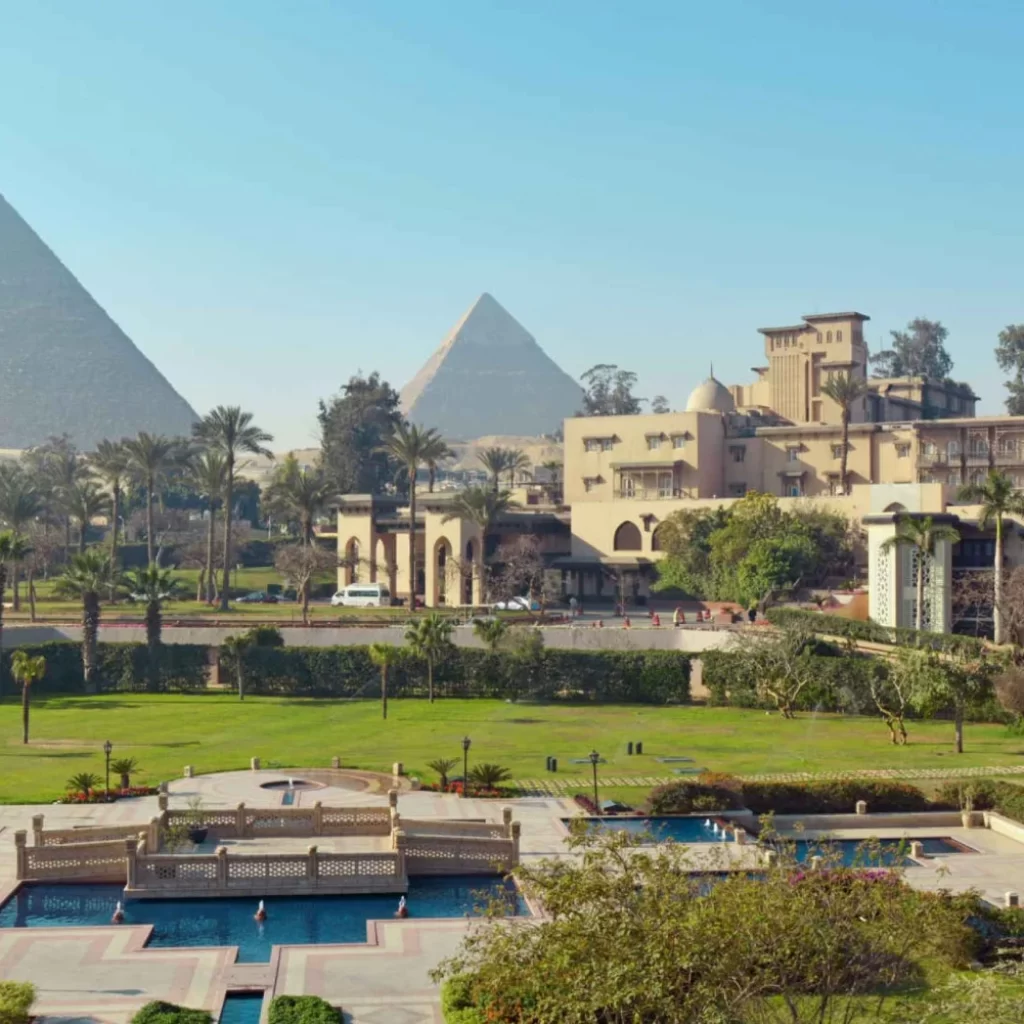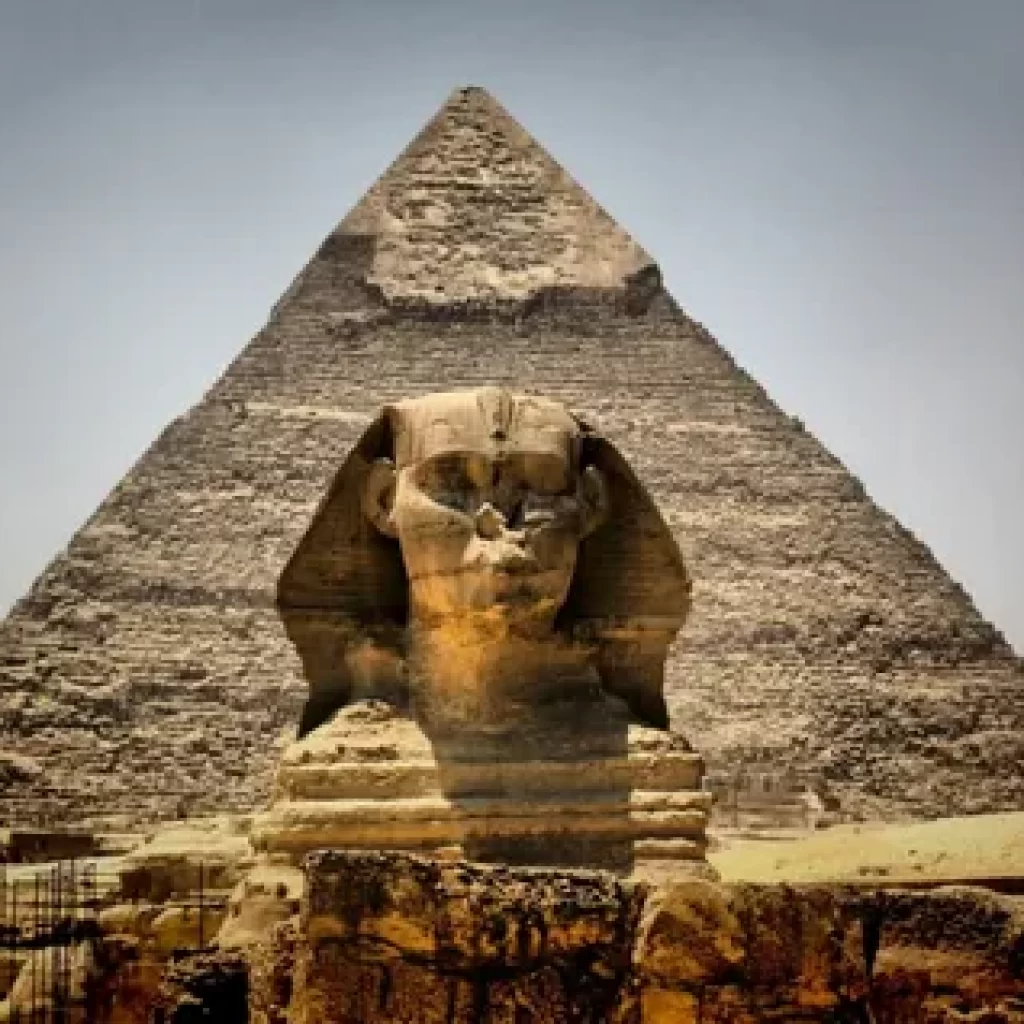Gateway to Ancient Wonders: The City of Giza

Table of Contents: City of Giza
- Introduction
- Historical Significance of Giza
- The Iconic Pyramids of Giza
- The Great Sphinx
- Giza’s Ancient Temples and Tombs
- The Construction Techniques of Ancient Builders
- The Modern City of Giza, A Blend of Old and New
- Giza’s Role in Egyptian Culture and Tourism
- Archaeological Discoveries and Ongoing Research
- Preserving Giza’s Heritage for Future Generations
- Conclusion
- FAQs
Introduction: City of Giza
The City of Giza, nestled on the west bank of the Nile River, just outside Cairo, is a cornerstone of ancient Egyptian history. Known worldwide for its monumental pyramids and the enigmatic Sphinx, Giza is not just a relic of the past but a vibrant city where history and modernity coexist. This article delves into the multifaceted aspects of Giza, exploring its historical significance, archaeological wonders, and the challenges of preserving its rich heritage.

- Historical Significance of Giza
Giza’s historical importance cannot be overstated. As the site of the ancient necropolis of the Old Kingdom, Giza was a focal point of ancient Egyptian civilization. The city served as a burial ground for Pharaohs and high officials, reflecting its crucial role in religious and cultural practices. The legacy of Giza extends beyond its architectural marvels; it symbolizes the pinnacle of ancient Egyptian art, culture, and technological advancement.
- The Iconic Pyramids of Giza
The Pyramids of Giza are among the most recognizable structures in the world. The Great Pyramid, built for Pharaoh Khufu, is the largest and most famous, followed by the Pyramids of Khafre and Menkaure. These pyramids were constructed over 4,500 years ago using millions of limestone blocks, showcasing the extraordinary engineering skills of the ancient Egyptians. Each pyramid served as a tomb, designed to protect the Pharaoh’s body and ensure their journey to the afterlife.

- The Great Sphinx: Guardian of the Plateau
The Great Sphinx of Giza, with its lion’s body and human head, is a symbol of mystery and power. Carved from a single limestone ridge, the Sphinx is believed to represent Pharaoh Khafre, who ruled during the 4th Dynasty. The Sphinx faces the rising sun, embodying the connection between the Pharaoh and the divine. Its purpose, while still debated, likely included serving as a guardian to the Giza Plateau and its sacred monuments.
- Giza’s Ancient Temples and Tombs
Beyond the pyramids, Giza is home to numerous ancient temples and tombs. The Valley Temple of Khafre, constructed from massive limestone and granite blocks, showcases the sophisticated architectural style of the period. The tombs of nobles, decorated with intricate hieroglyphics and artwork, provide insight into the daily life and beliefs of ancient Egyptians. These structures highlight the significance of funerary practices and the afterlife in Egyptian culture.

- The Construction Techniques of Ancient Builders
The construction of the pyramids and other monuments at Giza remains one of history’s greatest mysteries. Scholars believe that a combination of skilled labor, advanced knowledge of mathematics and astronomy, and innovative engineering techniques enabled the creation of these colossal structures. Theories about the use of ramps, levers, and pulleys abound, yet the exact methods continue to inspire awe and curiosity among historians and engineers alike.
- The Modern City of Giza: A Blend of Old and New
Today, Giza is a bustling metropolis that seamlessly blends the ancient with the modern. The pyramids dominate the city’s skyline, yet it is also filled with contemporary buildings, markets, and residential areas. Giza’s population enjoys modern amenities while living amidst one of the world’s most significant archaeological sites. This juxtaposition of old and new creates a unique cultural and historical landscape.

- Giza’s Role in Egyptian Culture and Tourism
Tourism plays a vital role in Giza’s economy and cultural identity. Millions of visitors flock to Giza each year to witness its ancient wonders. The city offers a variety of attractions, from guided tours of the pyramids and Sphinx to visits to the Solar Boat Museum. Tourism not only provides economic benefits but also fosters a deeper understanding and appreciation of Egypt’s rich heritage.
- Archaeological Discoveries and Ongoing Research
Giza continues to be a hotbed of archaeological research. Recent discoveries, such as the tombs of high-ranking officials and previously unknown burial chambers, have provided new insights into the lives of ancient Egyptians. Modern technology, including satellite imaging and 3D modelling, has revolutionized the field of Egyptology, allowing researchers to uncover hidden structures and artefacts without intrusive excavation.

- Preserving Giza’s Heritage for Future Generations
Preservation efforts at Giza are critical to maintaining its historical and cultural integrity. Challenges such as urban development, environmental degradation, and the impact of tourism necessitate comprehensive conservation strategies. Organizations like UNESCO and the Egyptian government are actively involved in safeguarding Giza’s monuments, ensuring that future generations can continue to explore and learn from this ancient city.
10.Conclusion:City of Giza
The City of Giza stands as a testament to the grandeur and ingenuity of ancient Egyptian civilization. Its pyramids, Sphinx, temples, and tombs offer a glimpse into a world that has fascinated humanity for millennia. As Giza evolves, it remains a symbol of human achievement and a beacon for archaeological discovery. The ongoing efforts to preserve and study Giza ensure that its legacy will endure, inspiring awe and wonder in all who visit.
FAQs: City of Giza

1. What is the significance of the pyramids in Giza?
The pyramids served as monumental tombs for Pharaohs, reflecting the ancient Egyptians’ beliefs in the afterlife and their advanced engineering skills.
2. Who built the Great Sphinx of Giza?
The Great Sphinx is believed to have been built during the reign of Pharaoh Khafre in the 4th Dynasty.
3. How old are the Pyramids of Giza?
The Pyramids of Giza were constructed around 2580–2560 BC, making them over 4,500 years old.
4. What other ancient structures are found in Giza?
In addition to the pyramids, Giza is home to the Great Sphinx, several temples, and numerous tombs of nobles and high-ranking officials.
5. How were the pyramids constructed?
The exact methods are still debated, but theories include the use of ramps, levers, and a large workforce skilled in engineering and construction.
6. Why is Giza important for archaeology?
Giza is a key archaeological site that provides invaluable insights into ancient Egyptian civilization, burial practices, and architectural techniques.
7. How is Giza being preserved?
Preservation efforts include regulating tourism, controlling urban development, and using modern technology to monitor and protect the site.





Comment (0)